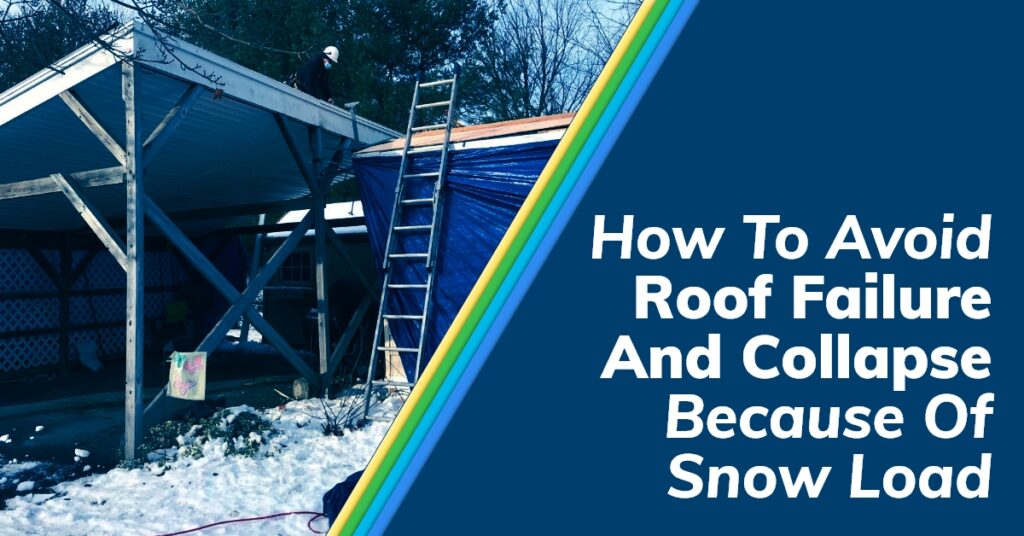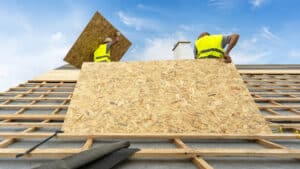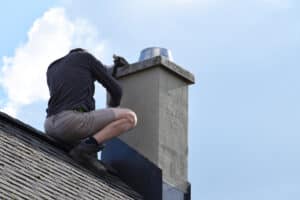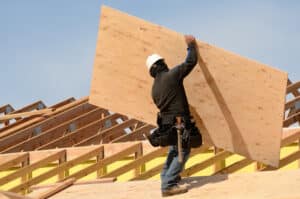If you live in an area with heavy snowfall, you should be aware of the risks to your roof. Too much snow and ice accumulation could lead to roof damage, leaks, and in the worst cases, roof collapse. Luckily, there are ways to keep snow load under control and minimize the risk of damage to your roof. Here are the key things homeowners in snowy climates need to know about snow load and snow removal.
Building Codes and Snow Load
In snowy areas, building codes are written with snow in mind. Roofs must be built to support a certain amount of snow weight. Usually, these requirements are determined based on the average annual snowfall.
The snow load a roof must support, by code, varies by region. The important thing is this: if your roof was built to code, then it should be able to support a reasonable amount of snow without concern. There are, however, situations in which snow presents a risk of collapse — even if your roof was built to code.
- Your roof is older and starting to show signs of deterioration, such as missing or lifted shingles.
- A big snowstorm blows through, dropping lots of snow in a short period.
- Freeze-thaw cycles cause snow to melt and then re-freeze, leading to ice buildup on the roof.
- Your roof has a low pitch and snow tends to get caught on it.
- Your gutters are damaged or clogged and don’t allow water to drain off the roof.
Calculating Snow Load
How do you know whether the snow on your roof is a risk for collapse? Start by estimating your snow load. Multiply the depth of the snow, in feet, by the weight of the snow per cubic foot. This will give you the snow load in pounds per square foot.
For instance, if you have 1.5 feet of snow that weighs 10 pounds per cubic foot, then your snow load is 1.5 x 10 = 15 pounds per square foot.
To accurately calculate snow load, you need to know the density of snow, which varies. Here are some good approximations:
- Fresh, fluffy snow: 4 pounds per cubic foot
- Damp snow: 8 pounds per cubic foot
- Compacted snow: 15 pounds per cubic foot
- Very wet snow: 30 pounds per cubic foot
- Ice: 55 pounds per cubic foot
As you can see, a foot of wet snow and ice is much heavier than a foot of fresh snow. The average roof can support 20 pounds per square foot of snow before it becomes a concern. It’s hard to reach this weight with fresh snow, but easy to reach it with ice or sleet. Therefore, removing fresh snow before it turns to wet snow or ice is wise.
Damage Caused By Excessive Snow
So, what happens if you don’t have excess snow removed from your roof? In the worst-case scenario, your roof deck could crack from the weight, leading to a possible roof collapse. More often, though, your roof and home will suffer other types of damage.
Ice dams, which are large formations of ice along the edge of the roof, are common during freeze-thaw cycles. They can pry shingles off the roof, damage gutters, and cause leaks.
When there’s excessive snow and ice on a roof, water can also start ponding in certain areas. This constant exposure to moisture can cause shingles to deteriorate. Before long, you’ll end up with leaks in your attic. Even small leaks can lead to mold growth. Roofers will have a hard time accessing the roof to make repairs if it’s covered in snow and ice. If you keep your roof clear and happen to notice a leak in the winter, your roofers will be able to make repairs safely and more swiftly.
The Importance of Professional Snow Removal
Removing snow from your roof early on is the best way to prevent ice accumulation, shingle damage, and other damage to your roof. But don’t just climb up on a ladder and push snow off the roof. It’s easy to accidentally damage shingles or injure yourself in the process. Plus, the falling snow could damage landscaping and other items below.
Hire a professional roofing company to handle your snow removal. Professionals can determine the best way to safely remove snow from your roof. They’ll relocate it to an area where it’s melting and won’t damage anything on the ground. Professionals also know how to avoid injuries when working on and around an icy roof. And if your roof already has ice dams, they can safely remove those, too.
If you’re worried about snow load this winter, contact Adam Vaillancourt Roofing. Our experienced workers work with homeowners throughout the Southern New Hampshire and Northern Massachusetts area. We’d love to help you remove snow and ice from your roof to prevent future damage.




